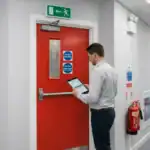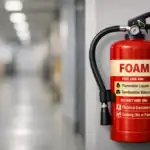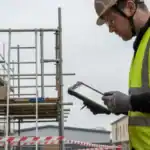
Running a small business is hard work, so it’s understandable if fire safety is permanently at the bottom of your to-do list. However, for most low-risk workplaces, fire safety is more straightforward than you think, and you can handle most duties yourself, including conducting fire drills.
This guide breaks down the process of conducting a fire drill into simple, actionable steps anyone can follow. You’ll learn why fire drills are important, where they fit into your fire safety strategy and how to ensure your team is prepared for an emergency. By the end, you’ll be more confident carrying out fire drills yourself.
Your Fire Safety Duties
As a business owner (or building manager), you are considered the ‘responsible person’ under the Regulatory Reform (Fire Safety) Order 2005 (FSO). This means you are accountable for the fire safety of your premises. Here are the primary duties related to fire safety:
- Fire Risk Assessment: Conduct a thorough fire risk assessment of your premises. Identify potential fire hazards, evaluate the risk level and implement measures to mitigate these risks. This assessment should be reviewed regularly and updated whenever there are significant changes in the workplace.
- Emergency Plan: Develop an emergency plan. It must include clear instructions on evacuation procedures, designated assembly points and roles and responsibilities during an evacuation. Communicate this plan to all employees.
- Fire Safety Training: Provide all employees with basic fire safety training. Training should cover fire safety regulations, essential fire prevention principles and what to do in an emergency (including raising the alarm and evacuation).
- Maintenance of Fire Safety Equipment: Regularly check and maintain fire safety equipment such as alarms, extinguishers and fire doors. Ensure that all equipment is in good working order and that employees know how to use it.
- Regular Fire Drills: Conduct fire drills, meaning a regular rehearsal of your evacuation plans. Practice ensures everyone knows the evacuation procedure and their role in it. These drills must happen at least once every 12 months (but more often is better).
While you are responsible for these tasks, you don’t have to do them all yourself. You can appoint other competent people to carry them out on your behalf. However, it’s your duty to ensure these tasks are done correctly and by someone who is competent.
For low-risk workplaces, you can develop the competence to manage certain fire safety duties yourself or train existing staff members to handle them (like running fire drills). This approach can be more straightforward and cost-effective than hiring consultants.
The Importance of Fire Drills
Understanding why fire drills are essential ensures you’ll put more effort into developing and rehearsing them with your staff. Fire drills serve three key purposes:
- Compliance with Regulations: Under the FSO, all workplaces must conduct regular evacuation drills. This rule ensures that everyone knows how to respond quickly and safely in case of a fire.
- Rehearsal and Normalisation: Regular drills help normalise the evacuation process for everyone in the building. People who know what to do and where to go are less likely to panic and can exit the building faster.
- Identifying and Fixing Issues: Drills let you test your fire safety plans ahead of a real emergency. You can find and fix any issues before anyone is at risk of injury.
By conducting regular fire drills, you ensure that your plans are sound and allow for a safe and calm exit for all employees.
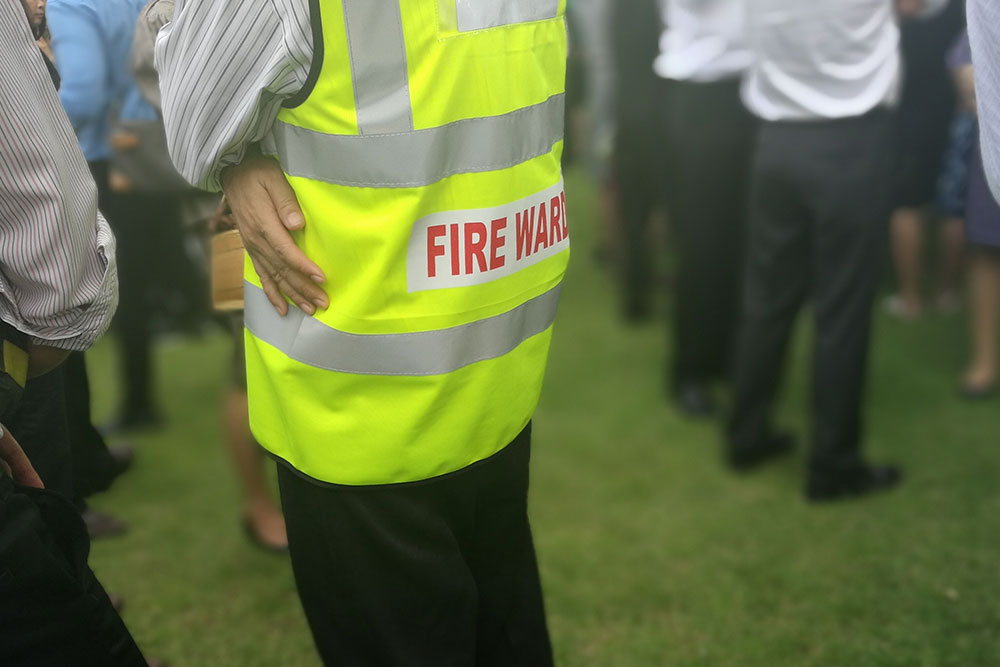
How to Conduct a Fire Drill
Planning and executing a fire drill might seem daunting, but with clear steps, it can be straightforward to manage. Here’s a step-by-step guide on how to conduct a fire drill.
Fire Safety Training
Our Fire Safety Training course gives a basic understanding of fire prevention principles, the sources of ignition and fuel and safe systems of work to prevent fire hazards and accidents within the work environment.
Planning the Drill
Effective planning is crucial to ensure a successful fire drill. Here’s what you need to do before the drill:
- Develop a Plan: Start by developing a comprehensive fire drill plan. Identify the critical components of your fire evacuation plan, including escape routes, assembly points and roles and responsibilities.
- Communicate the Plan: Ensure all employees are familiar with the fire drill plan. Inform them about the purpose of the drill, the procedures to follow and their specific roles.
- Notify Building Occupants: If you’re in a shared building, inform other occupants about the upcoming drill to prevent confusion and limit the test evacuation to your employees.
- Coordinate with Emergency Services: Depending on the scale of your drill, you might want to inform local emergency services. Also, if a third party monitors your fire alarms, notify them when you’ll be carrying out your fire drill.
- Prepare Safety Officers: If you have the numbers, assign safety officers or fire wardens to help manage the drill. These individuals should be well-versed in the evacuation plan and able to assist others. They can also feedback on overall performance.
- Schedule the Drill: Choose a date and time for the drill. While unannounced drills test preparedness, it’s best to start with a scheduled drill so employees can rehearse the key steps without worry.
- Check Equipment: Check all fire alarms and emergency equipment are functioning correctly before the drill.
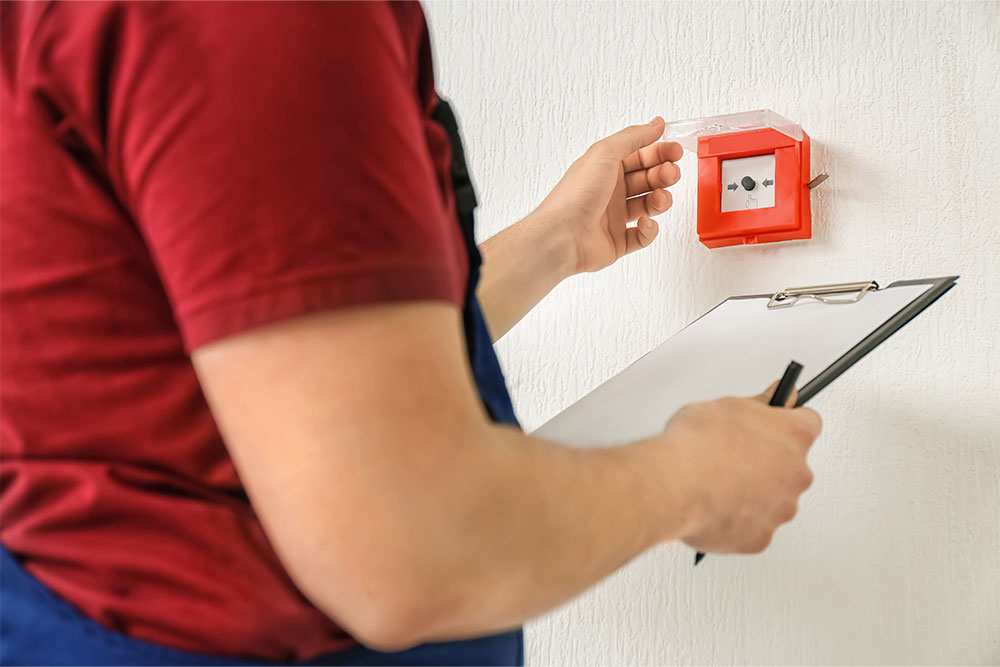
Proper planning helps identify potential issues beforehand and ensures everyone knows their role. This preparation is vital in making the drill run smoothly and effectively.
Conducting the Drill
Once you’ve planned the drill, the next step is to conduct it. Here’s how to carry out the fire drill:
- Alarm Activation: On the day of the drill, activate the fire alarm system. This helps employees recognise the sound of the alarm and recognise the need to evacuate immediately.
- Evacuation: Monitor the evacuation process. Ensure everyone follows the designated escape routes and gathers at the specified assembly points. Observe the flow of people and identify any bottlenecks or issues.
- Headcount: Once everyone has gathered at the assembly point, conduct a headcount to confirm all employees are present. This is crucial in a real emergency to identify anyone trapped inside.
- Debrief and Feedback: Conduct a debriefing session after the drill. Give participants feedback about what went well and what could be improved. Invite employees to give you their input, too.
- Document the Drill: Keep a record of the drill, including the date, time and any issues identified. This documentation is helpful for future reference and for demonstrating compliance with regulations.
Regularly conducting fire drills ensures your team is prepared to respond appropriately in an actual emergency. Continuous improvements based on feedback will maintain a high level of fire safety awareness and readiness in your workplace.
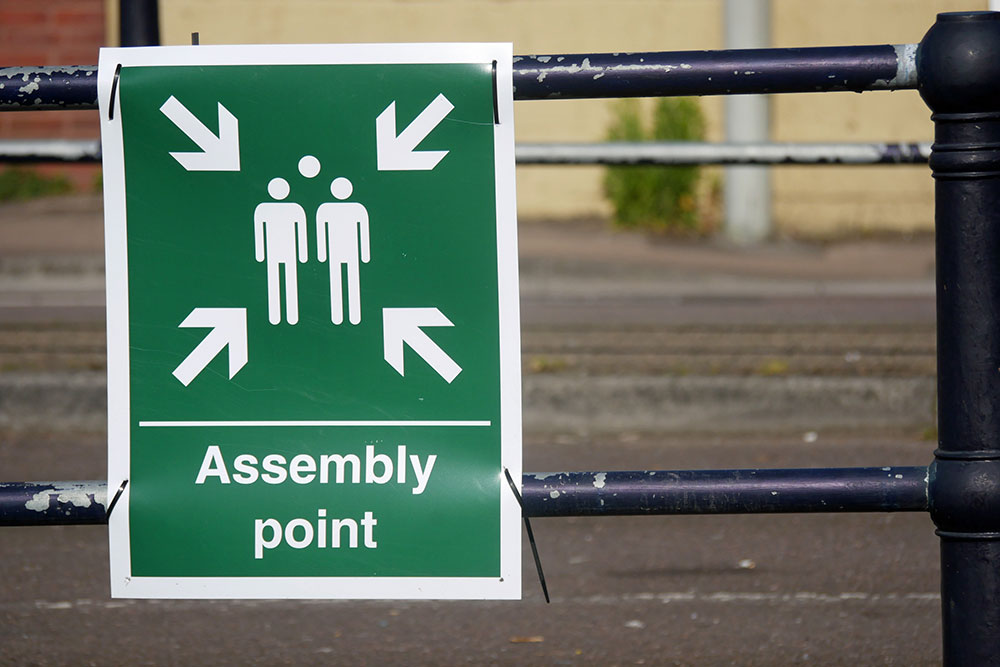
Integrating Fire Drills into Your Fire Safety Strategy
Fire drills are one part of a comprehensive fire safety strategy. Here are some additional elements to consider:
- Regular Training: Provide regular refresher courses beyond the initial training to keep fire safety knowledge current. Employees need these sessions to reinforce their understanding and readiness.
- Fire Safety Equipment: Regularly inspect and maintain all fire safety equipment. This includes fire extinguishers, fire doors and alarm systems and activation points.
- Escape Routes: Ensure all escape routes and exits are clearly marked with visible signage and kept free from obstruction. Clear signs help guide employees during an evacuation, especially if visibility is low due to smoke. Unobstructed routes ensure a quick exit for staff and quick entry for emergency services.
- Review and Update Plans: Regularly review and update your fire safety and evacuation plans. Changes in the building layout or the number of employees impact these plans, so it’s important to keep them current.
A well-rounded fire safety strategy makes sure your workplace is ready for any fire emergency. Regular updates and checks of your plans and equipment will protect your employees and your business.
Investing in Fire Safety Training for your team helps make your workplace even safer. It gives your employees the know-how to prevent fires and handle emergencies confidently.
Invest in Fire Safety Training
Fire drills are a crucial part of keeping your workplace safe, but they’re just one piece of the puzzle. Invest in a Fire Safety Training course to ensure your team is fully prepared.
Our online Fire Awareness Training course is a ready-made solution that meets basic training requirements. It’s flexible and affordable, making it easy for your team to fit into their schedules.
It offers several benefits:
- Fire Prevention: The biggest benefit is fire prevention. Employees will learn to identify potential fire hazards and prevent fires before they start.
- Emergency Response: Your team will know exactly what to do if a fire does occur, including how to evacuate safely and use firefighting equipment properly.
- Compliance: Providing training is a requirement under the Fire Safety Order. The training supports compliance with fire safety regulations.
- Confidence: With the proper training, your employees will feel able to handle a fire emergency, making the workplace safer for everyone.
Don’t wait for an emergency to find out if your team is prepared. Cross ‘invest in Fire Safety Training’ off your to-do list today and give your employees the skills to keep themselves and your business safe.













